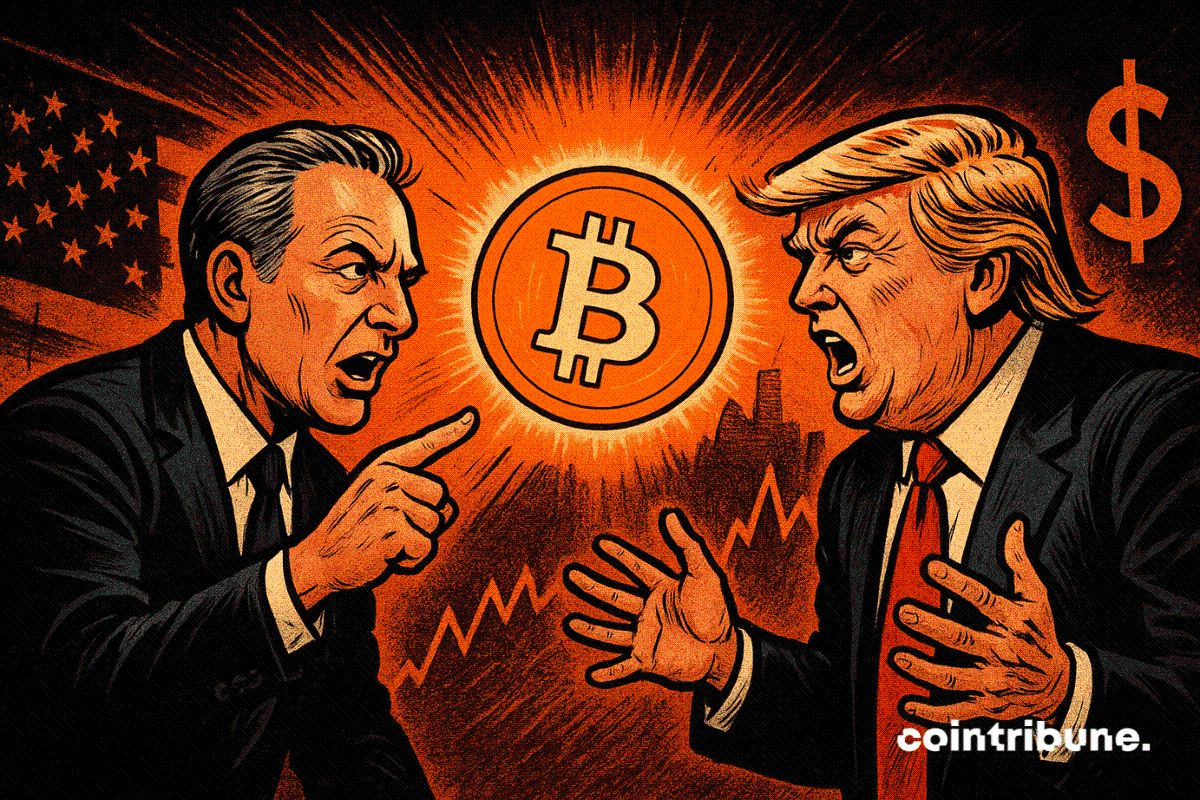Transatlantic Tech Tensions: Assessing the Impact of Trump's Tariff Threats on Global Tech and Semiconductor Markets
- Trump's 100-300% semiconductor tariffs and export restrictions are reshaping global supply chains, forcing firms to reshore or nearshore production. - TSMC's $165B U.S. investment and Intel's Arizona expansion highlight industry alignment with U.S. manufacturing priorities amid geopolitical risks. - Malaysian/Vietnamese firms gain competitive advantage through nearshoring, while investors hedge volatility via inverse ETFs and focus on defense-tech aligned companies. - Long-term winners will balance R&D i
The global technology and semiconductor sectors are navigating a period of profound uncertainty, driven by escalating transatlantic trade tensions and the Trump administration's aggressive tariff policies. These measures, framed as a defense of U.S. economic and national security interests, have triggered a seismic shift in global supply chains, R&D priorities, and market dynamics. For investors, the challenge lies in deciphering the long-term implications of this fractured regulatory environment while identifying opportunities to hedge risk and capitalize on strategic sector positioning.
The Tariff Landscape: A New Era of Geopolitical Risk
President Trump's 2025 tariff announcements—ranging from 100% to 300% on semiconductor imports—represent a stark departure from traditional trade policy. These tariffs, coupled with export restrictions on “highly protected technology and chips,” are not merely economic tools but geopolitical weapons aimed at reshaping global competition. The stated rationale—countering digital services taxes and protecting U.S. firms from perceived unfair treatment—has been met with retaliatory measures from the EU and other trade partners, creating a feedback loop of escalating tensions.
The legal and political battles surrounding these tariffs further complicate the landscape. While the Court of International Trade has temporarily enjoined some measures, the administration's executive orders, such as the delayed implementation of reciprocal tariffs on China, underscore its determination to enforce a hardline stance. For investors, this uncertainty demands a dual focus: short-term hedging against volatility and long-term positioning in sectors aligned with the administration's strategic priorities.
Sector-Specific Adjustments: Reshoring, Diversification, and R&D Reorientation
Global semiconductor firms have responded to the tariff threat with a mix of reshoring, supply chain diversification, and R&D intensification. TSMC's $165 billion U.S. investment, for instance, reflects a strategic pivot to align with U.S. manufacturing goals, while Intel's $100 billion expansion in Arizona highlights the role of government incentives in reshaping the industry. These moves are not merely defensive; they signal a broader realignment of the global semiconductor ecosystem toward U.S.-led production hubs.
However, reshoring is a costly and time-intensive endeavor. Smaller firms and mid-sized manufacturers, lacking the capital of industry giants, face existential risks. This has accelerated a trend toward nearshoring, with companies relocating production to Southeast Asia—particularly Malaysia, Vietnam, and India—to avoid tariffs while leveraging lower labor costs. For example, Malaysian firms like ViTrox and Pentamaster are capitalizing on their non-Chinese supplier status to secure U.S. contracts, illustrating how geopolitical dynamics are redefining competitive advantages.
R&D investments have also shifted focus. Companies like NVIDIA and AMD are prioritizing domestic chip design and AI-specific architectures, reducing reliance on foreign manufacturing. This aligns with the CHIPS and Science Act's incentives but also reflects a broader industry-wide recalibration toward self-sufficiency. Investors should monitor R&D spending trends, as firms that innovate in defense-oriented or export-controlled technologies—such as Broadcom and Applied Materials—are likely to outperform in a fragmented regulatory environment.
Strategic Positioning for Investors: Hedging and Long-Term Gains
The fractured regulatory landscape demands a nuanced investment strategy. Short-term volatility, driven by legal challenges and retaliatory tariffs, can be mitigated through tactical hedging. Inverse ETFs on semiconductor indices or options on tech-heavy benchmarks like the S&P 500 Tech Sector offer tools to offset downside risk.
Long-term positioning, however, requires a focus on firms aligned with the administration's strategic priorities. Defense-oriented companies, such as Qualcomm and L3Harris Technologies, are less exposed to trade restrictions and benefit from sustained government contracts. Similarly, firms involved in advanced manufacturing equipment—like Applied Materials and Lam Research—are critical to U.S. semiconductor self-sufficiency and are likely to see increased demand.
For those with a higher risk tolerance, emerging markets present opportunities. India's growing role as a semiconductor manufacturing hub, supported by its 19% tariff advantage, positions it as a key beneficiary of nearshoring trends. Malaysian and Vietnamese firms, with their strategic geographic and political positioning, also warrant attention.
Conclusion: Navigating the New Normal
The Trump administration's tariff policies have irrevocably altered the global tech and semiconductor landscape. While the immediate risks are significant, the long-term implications point to a more localized, resilient, and strategically aligned industry. For investors, the key lies in balancing short-term hedging with long-term bets on firms and regions that align with the new geopolitical and regulatory realities.
As the legal battles unfold and international negotiations progress, one thing is clear: the era of unfragmented global supply chains is over. The winners in this new environment will be those who adapt swiftly, innovate relentlessly, and position themselves at the intersection of technology, geopolitics, and economic resilience.
Disclaimer: The content of this article solely reflects the author's opinion and does not represent the platform in any capacity. This article is not intended to serve as a reference for making investment decisions.
You may also like
Stable TGE tonight: Is the market still buying into the stablecoin public chain narrative?
According to Polymarket data, there is an 85% probability that its FDV will exceed 2 billion USD on the day after its launch.

The Federal Reserve is likely to implement a hawkish rate cut this week, with internal "infighting" about to begin.
This week's Federal Reserve meeting may feature a controversial "hawkish rate cut." According to the former Vice Chair of the Federal Reserve, the upcoming 2026 economic outlook may be more worth watching than the rate cut itself.
Discover How ZKsync Fast-Tracks Blockchain Security
In Brief ZKsync Lite will be retired by 2026, having achieved its goals. ZKsync team plans a structured transition, ensuring asset security. Future focus shifts to ZK Stack and Prividium for broader application.

Bittensor Follows Bitcoin Path With TAO Halving
